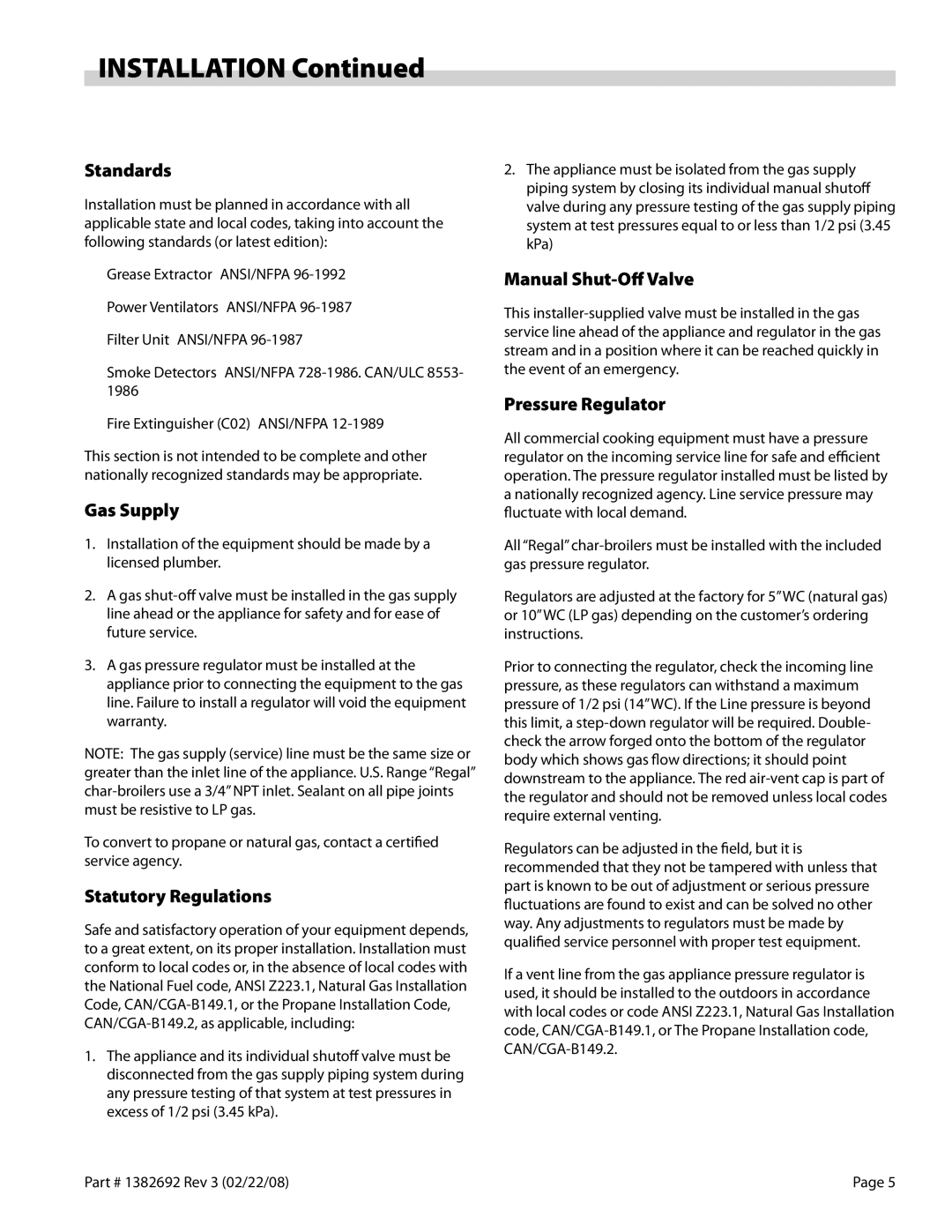INSTALLATION Continued
Standards
Installation must be planned in accordance with all applicable state and local codes, taking into account the following standards (or latest edition):
Grease Extractor ANSI/NFPA
Power Ventilators ANSI/NFPA
Filter Unit ANSI/NFPA
Smoke Detectors ANSI/NFPA
Fire Extinguisher (C02) ANSI/NFPA
This section is not intended to be complete and other nationally recognized standards may be appropriate.
Gas Supply
1.Installation of the equipment should be made by a licensed plumber.
2.A gas
3.A gas pressure regulator must be installed at the appliance prior to connecting the equipment to the gas line. Failure to install a regulator will void the equipment warranty.
NOTE: The gas supply (service) line must be the same size or greater than the inlet line of the appliance. U.S. Range “Regal”
To convert to propane or natural gas, contact a certified service agency.
Statutory Regulations
Safe and satisfactory operation of your equipment depends, to a great extent, on its proper installation. Installation must conform to local codes or, in the absence of local codes with the National Fuel code, ANSI Z223.1, Natural Gas Installation Code,
1.The appliance and its individual shutoff valve must be disconnected from the gas supply piping system during any pressure testing of that system at test pressures in excess of 1/2 psi (3.45 kPa).
2.The appliance must be isolated from the gas supply piping system by closing its individual manual shutoff valve during any pressure testing of the gas supply piping system at test pressures equal to or less than 1/2 psi (3.45 kPa)
Manual Shut-Off Valve
This
Pressure Regulator
All commercial cooking equipment must have a pressure regulator on the incoming service line for safe and efficient operation. The pressure regulator installed must be listed by a nationally recognized agency. Line service pressure may fluctuate with local demand.
All “Regal”
Regulators are adjusted at the factory for 5”WC (natural gas) or 10”WC (LP gas) depending on the customer’s ordering instructions.
Prior to connecting the regulator, check the incoming line pressure, as these regulators can withstand a maximum pressure of 1/2 psi (14”WC). If the Line pressure is beyond this limit, a
Regulators can be adjusted in the field, but it is recommended that they not be tampered with unless that part is known to be out of adjustment or serious pressure fluctuations are found to exist and can be solved no other way. Any adjustments to regulators must be made by qualified service personnel with proper test equipment.
If a vent line from the gas appliance pressure regulator is used, it should be installed to the outdoors in accordance with local codes or code ANSI Z223.1, Natural Gas Installation code,
Part # 1382692 Rev 3 (02/22/08) | Page 5 |
